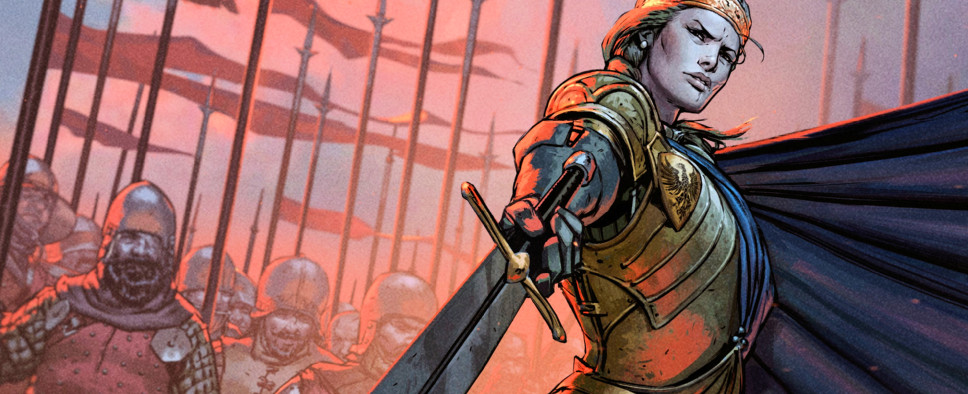Thronebreaker: The Witcher Tales Review
-
Category: ReviewsHits: 19779

Article Index
Introduction
Thronebreaker: The Witcher Tales is CD Projekt Red's latest foray into Andrzej Sapkowski's world of witchers, monsters, and rival kingdoms. However, this time around instead of using the witcher Geralt of Rivia to dispatch monsters in solo combat, you're put in charge of Meve, the queen of Lyria and Rivia, and your focus is more on armies, treaties, and castle sieges.
As the game opens up, you're only worried about some pernicious bandits who have been plaguing your kingdom, but soon enough Nilfgaard invades and you lose your castle -- and you suddenly find yourself in desperate need of allies who can help you to re-take your lands. And that's just in Chapter 1. From there, it's a long road to setting things to rights.
Game Mechanics
Thronebreaker is only sorta, kinda an RPG. You and your soldiers don't gain any experience or levels, there aren't any skill trees, and while the game keeps track of the quests you've completed, I'm not sure what it's counting (unless finding out about a chest and then opening it counts as a "quest"). But you control Meve in the game, and you make a lot of decisions for her, and so Thronebreaker is an RPG in the literal sense since you're role-playing Meve.
But really, Thronebreaker is more of a tactical strategy game, where you control a ragtag army and guide it through various battles, all while collecting resources and keeping up morale. Just imagine if The Witcher (the original one), The Banner Saga, and Heroes of Might and Magic had a night of wild sex. Thronebreaker might be the result.
Each chapter in the campaign is played on a large, linear-ish map. You move Meve on the map by left-clicking where you want her to go. As you explore, you find people to talk to, monsters to defeat, and piles of resources to pick up. Interacting with these objects is accomplished by right-clicking. A lot of what you see is optional, so if a battle is too difficult for you, then you can skip it, and if you just want to hurry through a map, then you can.
The three resources in the game are gold, wood, and recruits. You find gold and wood on the ground, especially after battles, and you gain recruits when you visit towns and ask for support. These resources are used to upgrade the tents in Meve's camp: a tavern (where you can talk to your named companions), a command tent (where you can choose which soldiers fight for you), a training ground (where you can practice your battle tactics), and a workshop (where you can train and upgrade your soldiers).
Sadly, you find way too many resources in the game, to the point where I finished constructing and training everything I needed by the middle of Chapter 4 (out of 6). In particular, I ended the game with almost 800 recruits, which is about ten times as many as I spent. It's one thing to provide players with extra resources, just in case they miss some while exploring, but with that many extra, you might as well not have the resource at all.
Along with resources, you also have to pay attention to the morale of your soldiers, which can be high, low, or neutral. Your choices and actions affect your morale, but after each battle it's reset back to neutral, so it isn't possible to bury yourself in bad decisions. As examples, praying at a shrine raises your morale, while killing enemies in a field hospital lowers it. Morale has a fairly minor effect on the power of your soldiers, so even if you regularly do the "wrong" thing, you should still be able to survive.

